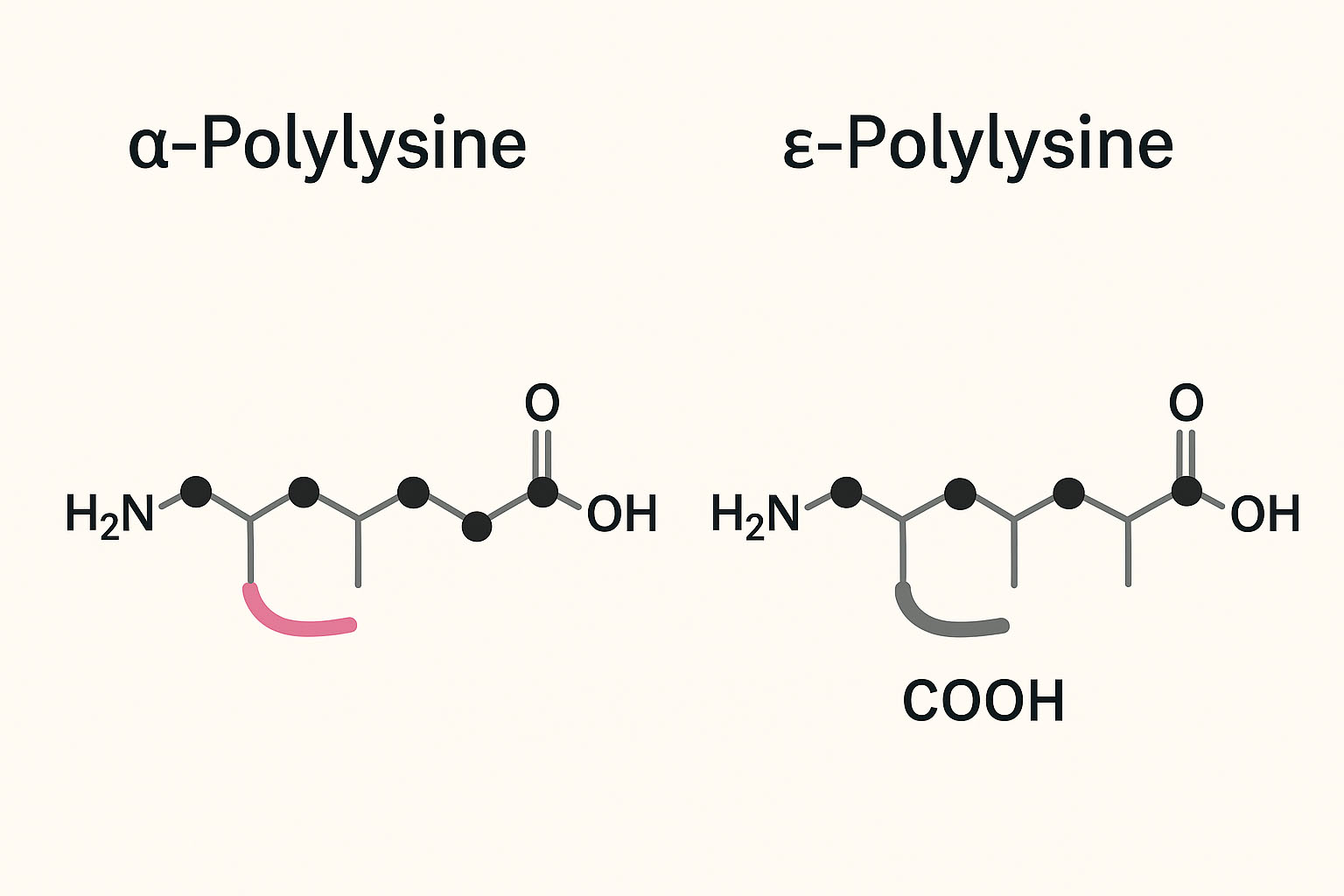|
Property |
α-Polylysine |
ε-Polylysine |
|
Type of linkage |
α–amino and α–carboxyl groups |
ε–amino and α–carboxyl groups |
|
Bond type |
α-peptide bond (typical protein bond) |
ε-peptide bond (non-protein type) |
|
Molecular structure |
Similar to proteins found in living organisms |
Unusual linkage, not found in natural protein |
|
Molecular weight range |
Typically 5–30 kDa |
Typically 3–5 kDa |
|
Produced by |
Synthetic chemical or enzymatic polymerization |
Natural fermentation by *Streptomyces albulus* |
|
Property |
α-Polylysine |
ε-Polylysine |
|
Solubility |
Water-soluble |
Highly water-soluble |
|
Charge |
Positively charged at neutral pH |
Positively charged (cationic) |
|
Biodegradability |
Fully biodegradable |
Fully biodegradable |
|
Antimicrobial activity |
Weak or none |
Strong antimicrobial properties |
|
Stability |
Stable under moderate conditions |
Stable across a wide pH and temperature range |

|
Aspect |
α-Polylysine |
ε-Polylysine |
|
Origin |
Synthetic |
Natural fermentation |
|
Bond type |
α-peptide |
ε-peptide |
|
Antimicrobial activity |
Low |
High |
|
Primary use |
Biomedical, nanotech |
Food, agriculture, cosmetics |
|
Biodegradability |
Yes |
Yes |
|
Regulatory approval |
Not for food |
GRAS-approved preservative |